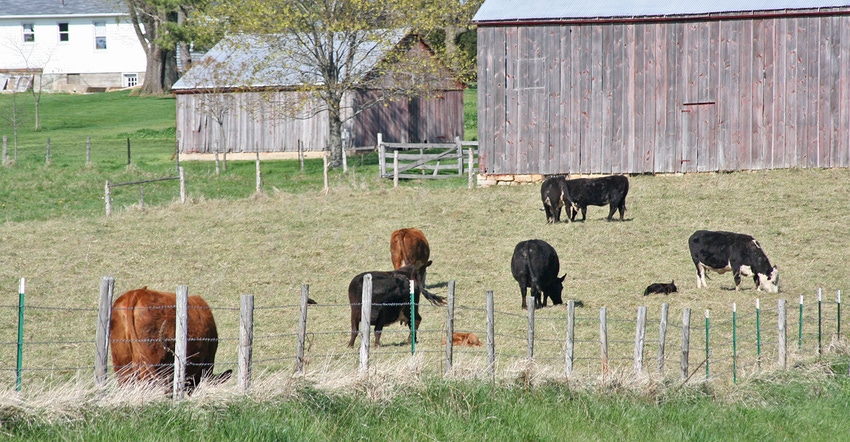February 19, 2020

Now is the time to seed oats and clovers to improve spring cattle grazing resources and reduce costs, says Patrick Davis, University of Missouri Extension livestock specialist.
“Feed cost is a major cow-calf operation cost,” Davis says. “Seeding forages improves spring grazing pastures, reduces supplemental feed costs and potentially improves operation profit.”
What to plant
Oats and clovers are forages to seed now for spring grazing to help reduce supplemental feed costs.
“Proper establishment and grazing management of oats and clovers is key for optimum cattle performance,” Davis says.
Clovers have more flexibility in establishment than oats because they can be broadcast or drilled. However, drilling is the preferred method. Drilling improves seed-to-soil contact and results in better establishment.
“If you broadcast seed, use cattle hoof action — as well as the freezing and thawing process — to work the seed into the soil,” Davis says.
MU Extension offers an online guide to help producers through the process. Farmers can scroll through two tables — one for pure stands and another for mixtures — that address seeding rates and planting dates.
Grazing considerations
Proper grazing management is achieved through strip or rotational grazing.
Graze oats about 60 days after planting, Davis says. Begin grazing oats at 5 to 6 inches for optimum cattle performance. The initial stocking rate can be one animal to 3 acres. Adjust as growth changes, he says.
“Clover grazing management is key for optimum cattle performance and persistence of the plant in the pastures,” Davis says.
Grazing red clover when about half the plants are blooming will yield a feeding value similar to alfalfa. Longer periods between grazing white clover plants in grass stands also will reduce its proportion, he says.
White clover is a low-dry matter, high-digestibility forage that has potential to cause cattle bloat, Davis says. One way to prevent this is to slowly adapt the cattle to grazing the white clover.
Cattle concerns
Other preventative measures include providing supplemental proxalene or bloat blocks to cattle. Place white clover in a mixed grass stand to reduce the chance of bloat.
Red clover, a high-quality legume, improves spring grazing resources with less bloat potential, Davis says. Red clover, which is high in magnesium, can reduce the incidence of grass tetany. Cattle face greater risk of grass tetany during spring grazing because of low magnesium levels in lush grass.
Older early lactation cows are more susceptible to grass tetany because of reduced ability to mobilize magnesium and high nutrient demand.
In addition to adding red clover to pastures, producers should feed a high-magnesium mineral 30 days before green-up until grass growth is past the lush growing period to prevent grass tetany.
For more information on these topics, contact your local MU Extension agronomy or livestock field specialist. Find additional resources at extension2.missouri.edu.
Source: The University of Missouri Extension, which is solely responsible for the information provided and is wholly owned by the source. Informa Business Media and all its subsidiaries are not responsible for any of the content contained in this information asset.
You May Also Like




